A habit is something one does regularly without thinking. There are good habits, such as looking both ways before crossing a street, more or less benign habits, such as biting the ends of pencils, and bad habits, such as being persistently late. Photographers fall prey to all sorts of bad habits, and becoming aware of them is the first step in breaking yourself of them. From lecturing on photography, exchanging critiques with fellow members of three photography clubs, and so on, I have compiled a list of the worst of a photographer’s habits. These are the habits that beginners often find the most difficult to break and that even experienced photographers drift into more or less randomly without being conscious of them.
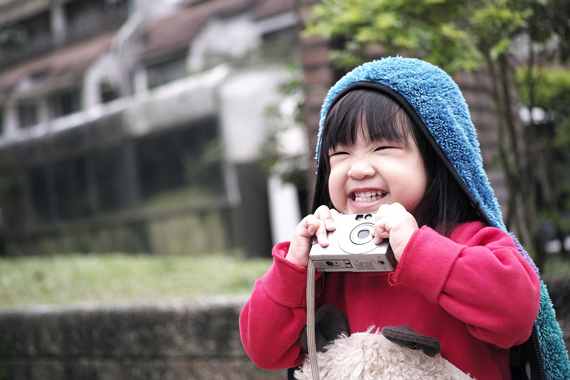
“I’m a little photographer” captured by Aikawa Ke
Habit #1: Shooting in bright daylight
For some people this habit is left over from pre-digital days when film was slow and strong light was often necessary to capture a good image. This bad habit is also encouraged by using cameras without viewfinders so that the brighter the scene, the stronger and clearer the image may appear on an LCD screen viewed in daylight. But bright illumination bleaches out light areas and obscures detail in the photo. It creates harsh shadows and lessens the vibrance of colors. Bright light also makes human subjects squint or even close their eyes. Try instead shooting on overcast days or very early or late in the day—or at least in solid (not dappled) open shade.
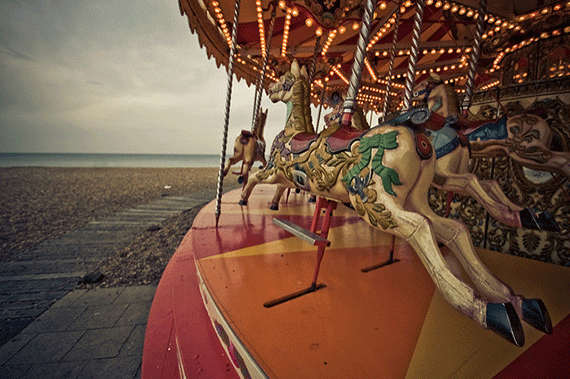
Photo by Rohit Mattoo; ISO 200, f/4.0, 1/320-second exposure.
Habit #2: Shooting jpeg
Yes, jpeg images take up less computer storage space than do raw images, but hard drives and other types of digital storage are now so cheap that it costs little to save raw images. Why let the camera decide how to alter you photos when you can do a better job of post-processing with modern, easy to learn, inexpensive software? Compression by jpeg narrows the dynamic range of your photo, changes colors (occasionally in outrageous ways), and can’t be undone. Virtually all post-processing software is now non-destructive, so whatever you do, you can undo. (If only everything in life had that option!)
Habit #3: Centering the subject
This may be the hardest bad habit for beginners to break, but it also sometimes plagues even seasoned veterans. Boring! Sure, there are times when centering is best, but those times are much rarer than you might guess. Simply obey the thirds rule, and most of the time you’ll be okay. With experience you can learn to compose images in other ways that are neither centered nor thirds, but experimentation is necessary, because this is much harder to do well than composing by the rule of thirds.
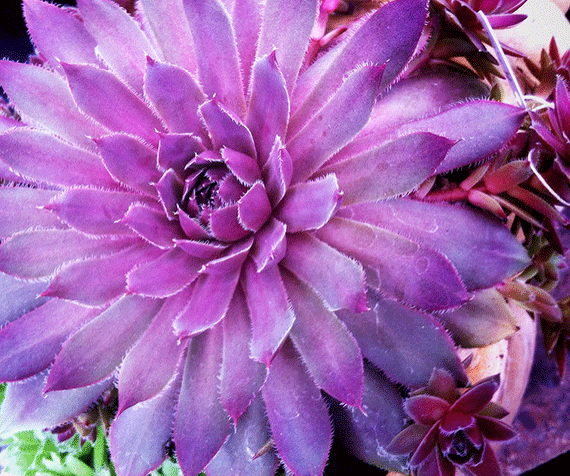
Photo Tarra Kongsrude; by ISO80, f/2.8, 1/30-second exposure.
Habit #4: Shooting from eye height
This is another bad habit that renders your photos so much like run-of-the-mill snapshots. We all look at the world most of our waking lives from our eyes while standing or sitting. Photos from these two vantage points usually just tell us something we already know. Merely squatting or dropping to your knees brings a remarkable freshness to your images. I sometimes carry a yoga mat so I can lie flat on the ground in relative comfort. Or get above your subject; shoot down from a hill, a balcony, the top of a flight of stairs, or from a second-floor window.
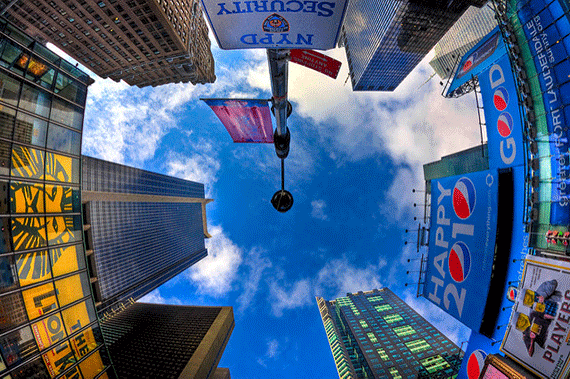
Photo by Joshua Ball; ISO 400, f/11.0, 1/320-second exposure.
Habit #5: Ignoring the background
Utility lines are the enemy of outdoor images, yet inexperienced and careless photographers tend to include them all the time. It is easy to become so focused on the subject that you don’t notice anything else in the frame. We have all seen outdoor pictures with the photographer’s shadow in them—ugh! When possible, choose a location with simple surroundings especially for photos of people so they don’t have light poles sticking out of their heads, for example. Another solution is to use a long focal length to make the subject sharp while the background is blurry.

Photo by Cyril Lookin.
Habit #6: Taking commonplace shots
At a local photo exhibit I said to a friend—while we were viewing an entry—that I had seen that photo before. Being a good photographer herself, she knew I was complaining that I had seen quite similar photos many times over. There is nothing wrong with photographing familiar sights or subjects so long as you find an uncommon way to do it. I try to shoot something commonly photographed in a new way, such as through an archway or with a person in the foreground enjoying the sight. I’ve framed a familiar lighthouse through a chain-link fence. I’ve returned at night to shoot a church or other building that everyone else photographs during the day. Take pains to avoid boring your viewers.
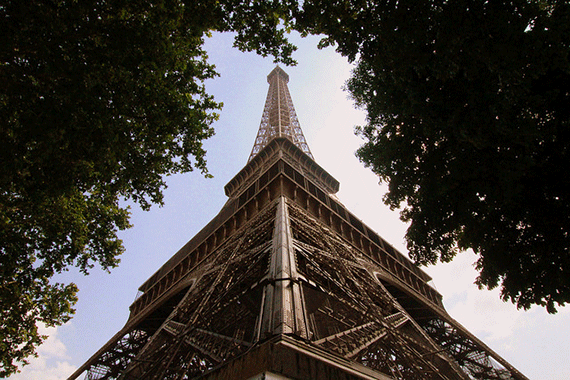
Photo by Ed Maguire; ISO 3200, f/22.0, 1/1000-second exposure.
Habit #7: Hand-holding every shot
As miraculous as modern image-stabilization hardware is, it has limitations. It can’t freeze camera shake that’s too fast or too extreme, it doesn’t allow for slow shutter speeds or timed exposures, and in some cases it can even work against you. Of course, tripods can’t be used where they are prohibited, where there isn’t sufficient space, when there is no time to set them up, or when they are too heavy to lug the distance you must walk. But you don’t have to have a super lightweight, expensive, carbon-fiber tripod for most purposes. Furthermore, other types of camera supports exist: monopods, gunstocks, beanbags, and so on. Photos are so much sharper when a tripod or other support is used; some kind of support should be employed whenever and wherever possible.
Habit #8: Taking one shot
Back in the days of film, every shot cost real money, either for processing or for the chemicals to do it yourself. One reason pictures appearing in National Geographic seemed to be so far beyond what the average photographer could possibly emulate was this: the magazine’s professional photographers took so many pictures of the same subject that one or two of them simply turned out better than most. Nowadays anyone with a digital camera can take zillions of shots of a given subject, and the only cost incurred is the time required to cull them. And experience automatically decreases that culling time as you become a ruthless critic of your own work.
You may not agree that these are the most critical bad habits of photography, but if you manage to avoid all of them, viewers will be suitably impressed with your work—even if they can’t put a finger on the exact reason.
About the Author:
Jack Hailman is a photographer based in Jupiter, Florida.
Like This Article?
Don't Miss The Next One!
Join over 100,000 photographers of all experience levels who receive our free photography tips and articles to stay current:






I beg to differ with the argument against shooting JPG. I don’t carry my SLR around with me all the time, I usually carry a pocket digital, which ONLY shoots jpg. You could make a similar argument for folks that use their smartphone or table as their “daily shooter.” Then there’s the issue of how much you’re getting and how much it’s taking: I did the math on my county fair this year; I shot ove4 3,400 photos with my D3100 ALONE–filling the better part of two 16GB cards, even though only about 30% of the images were shot in “RAW+JPG,” which takes almost 4x as much as shooting “JPG fine.” It took me nearly a month to free up enough hard drive space on my desktop to upload them all–over 40 GB (my pocket digital contributed a few GB, too) for one event. And then what? Most of my photo-edit software can’t handle the NEF format, so I end up using the JPG, anyway. And for most of my uses (300 dpi for 8X10 prints or smaller sized for book illustrations), I don’t use much more than 8MP, anyway. Sure, I might want to make a big wall-size print one day, but I’d say 80% of what I shoot isn’t meant to be fine art, anyway. So why waste memory on a 12 MB image when a high-quality JGP is usually less than 5MB?
I shoot JPG, and it has NOTHING to do with memory. If set my D60 is set to “RAW + JPG (basic),” and don’t have the NEF software installed, I’ll get a JGP and an unreadable NEF. I I do have the NEF drivers on it, what uploads to my computer is two identical JPG images. If I set it to RAW (only), I get something that none of my photo programs can understand–even with the NEF conversion software installed. So why bother saving in a format I can’t do anything with?
I am shooting both – JPEG and RAW. But in this case I am using JPEGs just for the “preview”.
I don’t understand not shooting jpeg. Every sense I obtained a camera that could shoot both that I what I do. Perhaps those who do a lot of editing on software that prefers RAW and that they will never use the JPEG file it is not needed. Until I find that I don’t need them in JPEG I will continue to do both.
A useful post, especially for novice photographers. Some good tips to follow for great pictures. Good job!
#1 – not always true – harsh sunlight can be very useful at times, especially in mono work which relies on contrast, something which is minimised during the ‘golden’ hours.
#2 – couldn’t agree more, those who champion SOOC are only fooling themselves, they are quite happy to let the camera’s on board processing engine decide how their image will be treated rather than taking control.
#3 – fast becoming the greatest threat to good photography – obeying the ‘rule’ of thirds does not a good image make – only the subject and the manner in which it was shot can achieve that.
Can’t say I endorse this list all the way, especially not #1. In certain areas of photography certain types of lighting is obviously preferred. But, if you’re a photojournalist or street photographer, for instance, do you wait for “less harsh light” to come back and capture an event or a moment you may never see repeated again? Great moments and real life don’t wait around for great light. Great photographers learn to make the most of the light they are given or then end up forfeiting the shot.
This article is interesting because I learned these things when I first started as well, and it brought me up to the level of technical proficiency with an understanding of the general concepts photographers use to do what they do. I even started a blog myself, very similar to this one, that helped people learn these basics quickly.
The problem arose when all of my images started looking like every other aspiring/intermediate/advanced photographer’s images. Perfectly exposed, aligned to the rule of thirds (or other classic guidelines), in-focus, clean, and otherwise the photography equipment of a Stepford Wife – technically perfect, yet largely devoid of a soul.
That’s a pretty picture of a flower. Oh, a guy playing a harmonica, how nice. And would you look at that, that girl’s eyes really pop. Wow. Wowsers.
It’s the photography equivalent of a white tablecloth. It’s a Kia Optima. It’s a dozen roses. It’s an aging opera singer. Don’t you want a greasy-ass barbecue sandwich dropping down your face at a picnic table with strangers? That 1982 Land Cruiser with the rack on top? Kurt Cobain’s grungy uncultivated voice making you feel things you haven’t felt since middle school?
So I started breaking rules. All of them. I started looking at pictures my parents took with their disposable cameras when they were still a bunch of carefree 20-somethings having the time of their lives, drinking beer from a keg, sneaking around at night, raising a healthy amount of hell, and generally not caring about anything but what they were doing right then and there. The flash was on, the camera was passed between friends when the moment seemed right, and the result was something you can’t make up. It wasn’t about photography – it was about everything else and photography was just a tool.
Nowadays I’ve changed my camera settings to replicate what you’d get from a point and shoot snapshot camera, and I make it mostly automatic. That means I’m at f/8, my flash is on, and I’m using the cheap-ass kit lens that came on the camera. My job isn’t being a “photographer” anymore and playing with a bunch of fancy toys while my models and friends awkwardly await the next strobe fire. My job is to create situations – real situations – that are worth photographing.
It’s almost like I don’t want anyone to know I’m actually a photographer by looking at my pictures. I want them to look at my imagery and imagine what it’s like to have my life. Like a good book or movie, I want them to forget that they’re looking at something that was, in fact, planned and designed from top to bottom. I want to make them remember times they haven’t thought of in years, and use their brains, not mine, delight and entertain my viewers.
If you want to check out what I do, my site is http://www.davidbeckphotography.com or you can find me on Instagram as @davidbeckphoto – you can follow me for more, and you’re welcome to contact me if you have questions. I challenge you guys to step outside your comfortable perfect shells and experience life outside of sterile perfection for once. I did and I’m never looking back.
I would add only one comment to these “rules”–rules were made to be “broken”–that’s how “good” photography starts….I’m just sayin’……
I agree with all of these. My pet one that I don’t see included is a picture should be of “something”. There shouldn’t be any, “what was this picture of” moments. Landscapes seem to be the most vulnerable to this.
Well, I found this post very interesting and controversial as well.
Some of the rules you mentioned were already criticized by some mates(whether right, wrong or just a different point of view).
8 Habit is really controversial to me too. The fact of shooting “zillions” doesn’t give you any advantage if you don’t know what you are doing and also could make you lazy and insecure. I would say instead that you can try several versions of the same photo changing perspective or depth of field to choose later the one you like most.
At the same time you said that shooting in digital cost you no money. I understand your point here, but it is not true as you have to take in count the obsolescence. It is not the same to shot 5 a day than 500. 500 photos per, let’s say, 200 days a year make 100.000 photos. If your shutter has a duration of 150.000 clicks means you have shutter for one year and a half.
I know that this is an exaggeration, but it is to illustrate that digital is much cheaper and fast that chemical and still not free.
Very good article anyway.
Well, the writer did exagerate when he said zillions.
Anyway, it is true in an event photography that you have to take a lot of pictures: reason being, everything happened so fast that the moment vanish too quickly. Sometimes the right practice is to try to get 1-2 good shots from your position and if the moment is still there, you can try a bit different vantage point. In a full day event, you can easily shoot 500 shots.
I did learn the hard way when I took too many shots in a position just to realize that i should’ve moved to find a better composition while there’s still a chance, and I end up with 5 photos that were taken too close.
Real photographers do not edit their photos ( i know that there are a lot of “professionals”” that do so). You either take a good shot or you don’t take any shot at all, there is not middle tearm.
If you need to photoshop your photos to give them a better look than you are not a photographer you are just a fraud, and that’s just how it is.
I am not a good photographer but at least i dont let a computer software take the credits whenever i get a good shot.
Shoting in raw is just an excuse to lay down millions of photoshop effects after you’ve taken your crappy photos
Every photographer of note, since the very inception of photography, has edited his/her work.
As my photography lecturer said last year, ‘If the great Ansel Adams felt the need to edit his work after shooting, don’t think you can get away with what’s in camera.’ Was one of the few times I agreed with him.
To be fair though, there’s editing and there’s manipulation. Manipulation has its time and place – like giving someone wings, or whatever – but should be avoided. Editing (or as we call it in the professional realm, ‘processing’) is necessary to make minor adjustments in colour, proportions, sharpness, etc – to fix camera defects (Nikon gives a bluish undertone to everything, Canon a reddish one, etc). This is why it’s adviseable to shoot in RAW.
You do know what ‘RAW’ means, right? It means you capture ALL the data that can be captured in the scene. You do know what is the difference between capturing RAW and JPEG, right? Capturing JPEG does not mean you capture the scene as is; it just means that you capture the scene, and you let the camera software decide for you.
A lot of people shoot in RAW and didn’t manipulate anything. You can take RAW and then convert to JPEG afterwards; usually the result is still better than in-camera JPEG.If not, all the data will still be yours long after the moment is gone, not only the data the camera software decides to keep.
And here ladies and gentlemen, we have a prime example or everything you don’t want to be. A person who thinks he/she knows everything, when in fact they are merely lost in their own delusions.
#8 is incorrect, you can’t take “zillions” of shots as this will waste your actuations.
Given that “zillions” is a fictitious figure in any case I think it’s fair to assume that the writer simply meant you can take a lot more photos with a digital than with the old film cameras. And given that a good DSLR will provide around 150,000 actuations before even starting to fail I think it’s a perfectly valid point.
Jack – I hope folks understand that you’ve only listed the 8 most common PREDOMINANT bad habits. We beginners are learning from the advice of pros like you; the 8 aspects are physical. Perhaps you could have included this: the shot should have a subject and a focus point/area – which begs the question before a shot: WHY AM I TAKING THIS SHOT? Beginners (like me) would do well to make this the first chapter of their DSLR religion.
Warm regards from Mauritius
Jack – I hope folks understand that you’ve only listed the 8 most common PREDOMINANT bad habits. We beginners are leaning from the advice of pros like you; the 8 aspects are physical. Perhaps you could have included this: the shot should have a subject and a focus point/area – which begs the question before a shot: WHY AM I TAKING THIS SHOT? Beginners (like me) would do well to make this the first chapter of their DSLR religion.
Warm regards from Mauritius
You forgot the biggest issue that most beginners have: excessive use of the camera’s built in flash! So many people just assume flash makes anything dark instantly better, when we all know that shadow can make the photo more interesting and flashes can bleach a face if the flash was pointed directly at the subject.
#2 Not true. As a beginner I shot RAW, as learning to use the camera and editing and all those lovely things meant a very important thing, in the future when I understand more I will need more leeway for editing.
#3 Trying to remember if the article was on this site or another, even pros centre subjects eg. at sports or such, for leeway in movement of the subject, then crop to put them on the thirds.
.#7 Tripod was bought with the camera, as a beginner yet again, due to knowing that there are times when you shouldn’t hold the camera.
#8 The first thing taught as a beginner is, you have a digital camera not a film, go ape crazy and take lots, so you don’t miss closed eyes etc. This in itself is actually a wrong teaching, as now you sit with 5+ of the same photo with just a minor change here and there, and now you need to know which one to use.
But numbers 1,4,5,6 were things that even I know I made the mistake even knowing that I shouldn’t, eg. shoot bright daylight, but you don’t always have a choice as well ie. wildlife, but one didn’t only shoot wildlife in harsh light.
I don’t think you read past the headlines.
#2 doesn’t actually sat that you should shoot JPEG. It says the exact opposite. It says exactly what you said.
It’s always better to read the piece in full. headlines don’t really explain everything, which is why they are followed by a paragraph or more of explanation.
No what #2 says is that shooting in JPEG is a bad habit of a beginner, what I am saying is that I never shot JPEG as a beginner.
You said #2 Not true.
I must have misunderstood.